#prestel verlag
Explore tagged Tumblr posts
Text

Robert Rauschenberg, Poster for Habitat II, (offset lithograph), 1996 [© Robert Rauschenberg Foundation, New York, NY. Diver image by Aaron Siskind, courtesy Aaron Siskind Foundation]
Bibl.: Marc Gundel, Rauschenberg. Posters, With a contribution by Jürgen Döring, Prestel Verlag, München, London, New York, NY, 2001
#graphic design#art#poster#robert rauschenberg#aaron siskind#marc gundel#jürgen döring#prestel verlag#robert rauschenberg foundation#aaron siskind foundation#1990s#2000s
67 notes
·
View notes
Text
Strandkrabben-Bisque
In der zweiten Julihälfte verbrachte ich Teile meines Sommerurlaubs auf der schönen niederländischen Insel Texel. Einer der Höhepunkte war übrigens das Treffen mit dem charmanten Krautjunker Goswin am Paal 17. Goswin kommentierte dieses Foto später damit, dass er darauf aussieht wie Bilbo, der gerade von Gandalf zu einem neuen Abenteuer überredet wird… In der Hafenstadt Oudeschild amüsierte ich…
#Anders Schønnemann#Carcinus maenas#Gone Fishing: Fisch und Meeresfrüchte#Mikkel Karstad#Prestel Verlag#Rezept Strandkrabben#Strandkrabben#Strandkrabben Rezept#Strandkrabben-Bisque
1 note
·
View note
Text
HERAUSRAGEND! Das Relief, von Rodin bis Taeuber-Arp: Hamburg bis 25. 02. 2024
Das Relief ist eine Mischform: Zwischen Malerei und Skulptur angesiedelt ist es zwar an die Wandfläche gebunden, ragt aber oft weit in den Raum hinein. Gerade seine Unbestimmtheit ließ dieses Medium zu einem wichtigen Feld für Experimente und Innovation werden. In ihm konnten sich Kunstschaffende über Gattungsgrenzen hinwegsetzen und eigenständige Positionen beziehen. ERNST LUDWIG KIRCHNER (1880…

View On WordPress
#Hamburg#Herausragend#Inspiration#Kunsthalle#Malerei#München#Prestel Verlag#Relief#Skulptur#Städel Museum Frankfurt
0 notes
Text
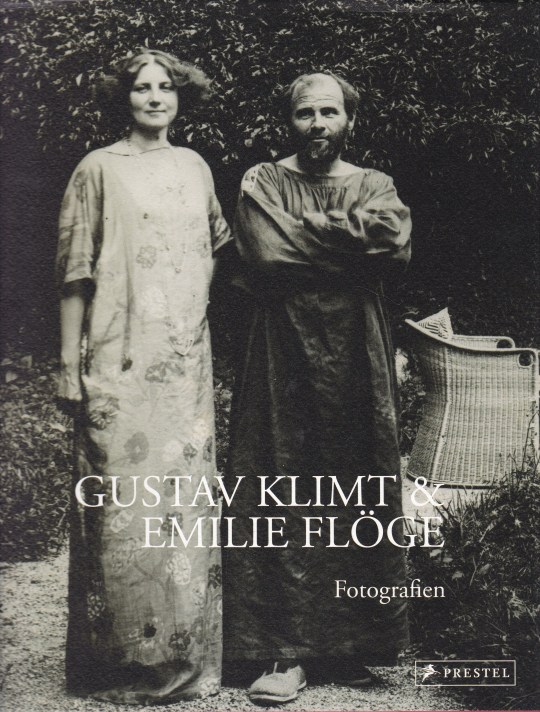
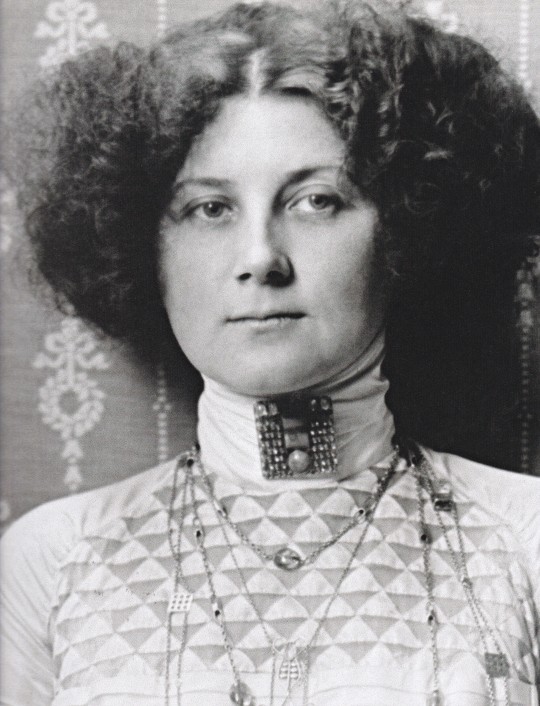

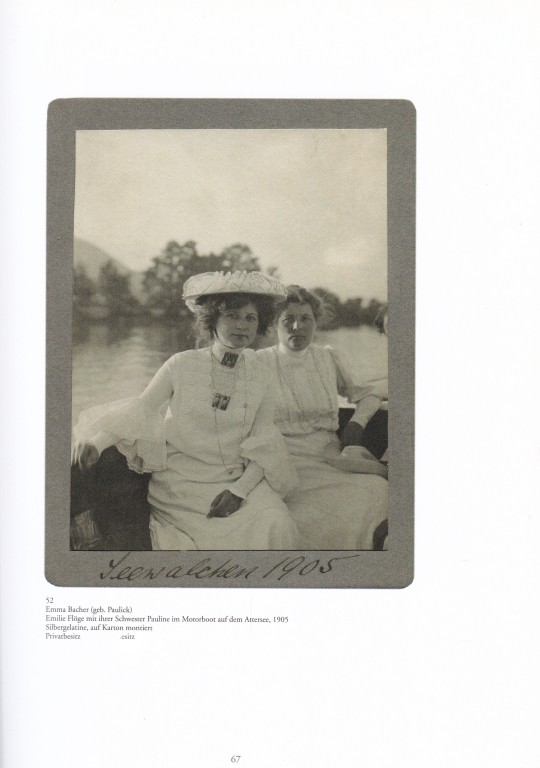

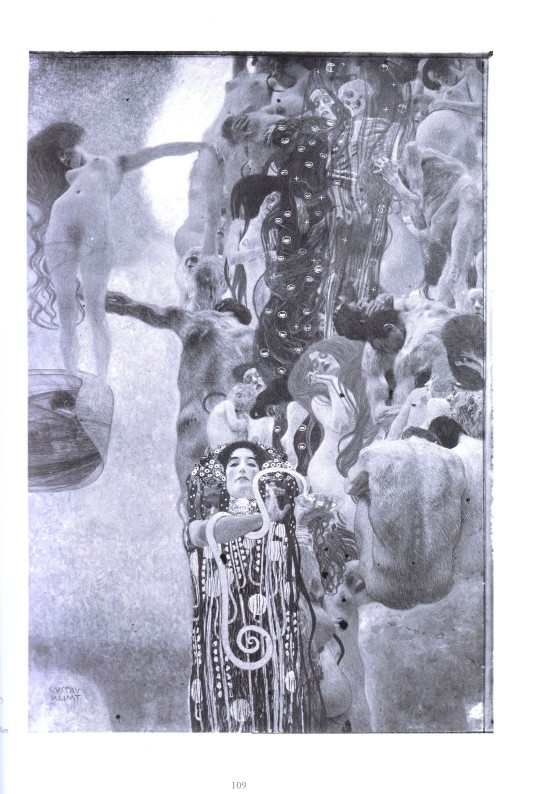
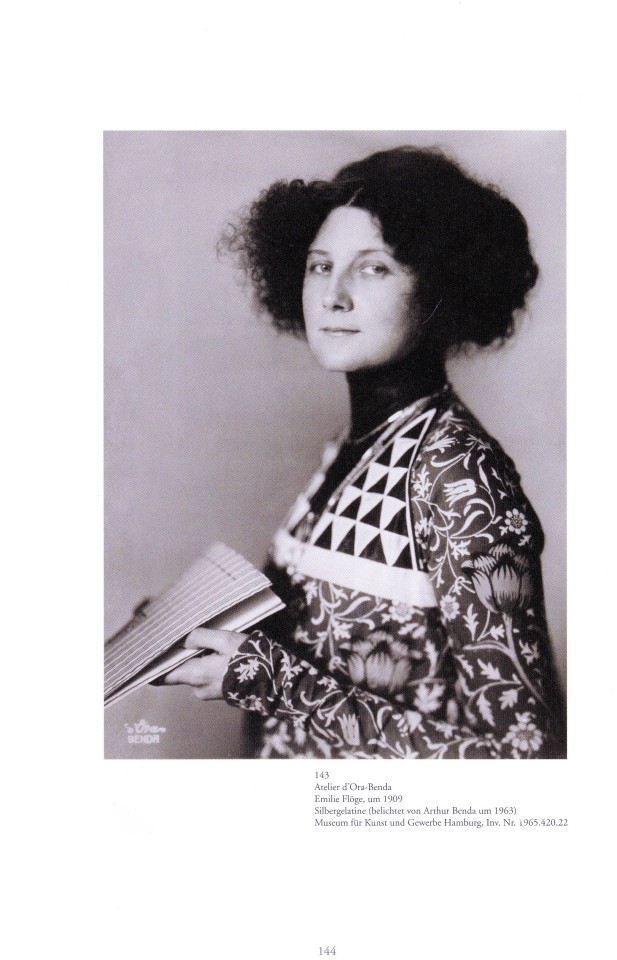
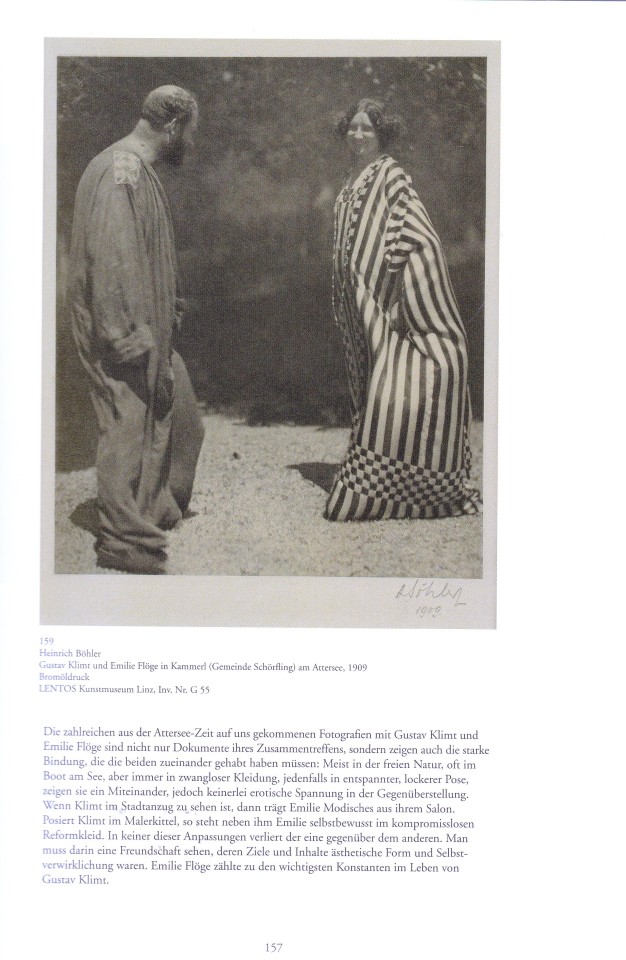


Gustav Klimt & Emilie Flöge
Fotografien
Agnes Husslein-Arco, Alfred Weidinger
Prestel Verlag, München 2012, 240 pages, 24 x 28,7 cm, iSBN 978-3-7913-5254-1 Deutsche Ausgabe
euro 50,00
email if you want to buy [email protected]
Die Wiener Modeschöpferin Emilie Flöge war nicht nur Gustav Klimts langjährige Geliebte, sondern auch Muse und Modell für einige seiner schönsten Gemälde. Das Paar stand im Zentrum jenes legendären Künstlerkreises, der um die Jahrhundertwende von Wien aus die Kunst in ganz Europa beeinflusste. Zu diesem Kreis gehörten auch zahlreiche Fotografen, die die rasante Entwicklung der modernen Technik nutzten und das Leben der Künstler und Bohemiens dokumentierten. Der vom Wiener Belvedere herausgegebene Band präsentiert erstmals sämtliche Fotografien von Klimt mit Flöge und zeichnet damit nicht nur ein faszinierendes Bild vom Leben dieses Paares und seiner Zeit, sondern spürt auch dem Einfluss nach, den bildende Kunst und Fotografie wechselseitig aufeinander ausübten.
Emilie Flöge was only a teenager when she met the painter Gustav Klimt, but their friendship soon evolved into a complex and loving relationship that lasted the rest of their lives. Alfred Weidinger, an acclaimed expert on Klimt and his contemporaries, has compiled an exhaustive collection of photographs relating to the artist and his designer muse. While Klimt took many of these shots, other photographers include Carl Schuster, Victor von Spitzer, Hugo Henneberg, Pauline Kruger Hamilton, Anton Josef Trcka (Antios), and unknown individuals who had access to the couple’s private lives. Presented chronologically, they offer insight into the creatively charged world that Klimt and Flöge inhabited—a world they influenced with their enormous talent and passions.
12/07/23
orders to: [email protected]
ordini a: [email protected]
twitter:@fashionbooksmi
instagram: fashionbooksmilano
designbooksmilano
tumblr: fashionbooksmilano
designbooksmilano
#Gustav Klimt#emilie flöge#designer muse#photography collection#couple's private lives#Alfred Weidinger#rare books#fashionbooksmilano
17 notes
·
View notes
Text
BASIC FORMS > BERND & HILLA BECHER
*CLÁSSICOS

Os alemães Bernd (Bernhard,1931-2017) e Hilla Becher (1934-2015) foram fotógrafos que juntos produziram uma extensa documentação tipológica de estruturas industriais na Alemanha e em outros países da Europa e nos Estados Unidos. Suas imagens têm um caráter que chamamos de "straight" ou seja sem firulas ou maneirismos, observando sempre um plano direto, em preto e branco, que serviram como estudos do que eles chamaram de "Escultura Anônima", um registro das relíquias arquitetônicas em extinção, como minas de carvão, siderúrgicas, caixas de água, silos de grãos e tanques de gás entre outras construções.
A importância da dupla pode ser avaliada pela Bienal de Veneza de 1990 que concedeu o Leão de Ouro da Escultura para eles. No pavilhão alemão daquele ano, foram expostas as séries de instalações arquitetônicas, cujo o mainstream da pesquisa da arquitetura não dava muita importância. Esculturas, no entanto, os Bechers nunca criaram. Eles simplesmente fotografaram as estruturas industriais abandonadas. Sem eles, realmente teriam continuado anônimas, no paradoxo do título de suas séries. Entre os inúmeros livros publicados, encontramos a reedição de seu Basic Forms ( Prestel London, 2020), originalmente publicado em 2014 pela Schirmer/Mosel Verlag Munich como Basic Forms- of Industrial Buildings, uma síntese de 40 anos de trabalho pelo mundo em busca da representação de tipologias e topografias peculiares.

Hilla e Bernd conheceram-se quando estudavam pintura na Kunstakademie Düsseldorf (Academia de Belas Artes de Dusseldorf) instalada na cidade dividida pelo rio Reno, com a Altstadt (Cidade Antiga) na margem oriental e as modernas áreas comerciais. Seguiram um romance que os levou a uma carreira colaborativa. Eles contam: “Tomamos consciência de que estes edifícios eram uma espécie de arquitetura nômade que tinha uma vida comparativamente curta – talvez 100 anos, muitas vezes menos, e depois desaparecem. Parecia importante mantê-los de alguma forma e a fotografia parecia a forma mais adequada.” Seus métodos e técnicas de trabalho influenciaram uma geração de fotógrafos hoje conhecida como Escola de Düsseldorf, que inclui nada menos que os consagrados alemães Andreas Gursky, Thomas Struth, Thomas Ruff e Candida Höfer. Suas obras estão incluídas nas coleções do Art Institute of Chicago, do Museum of Modern Art de Nova York, da National Gallery of Art de Washington, D.C. e da Tate Gallery de Londres, entre inúmeras importantes instituições do mundo.

O inventário fotográfico destas estruturas industriais é sem dúvida uma das realizações mais interessantes e significativas da produção fotográfica dos séculos XX e XXI. Apoiando-se na ideia da tipologia e uma visão comparativa, o casal entrou sistematicamente no assunto revelando constantes variações destes complexos que nunca eram chamados de "arquitetônicos" muito menos interessantes para a arte estabelecida à época do início desta produção ( anos 1960 aos 2000) construindo uma impressionante coleção de séries tipológicas, criando assim uma inestimável enciclopédia fotográfica sobre a cultura industrial de uma época final que combina a taxonomia científica com o empirismo estético. O levantamento mostrado em Basic Forms, segundo seus editores, ilustra ambos: as "formas básicas" da arquitetura industrial anônima e o conceito estético da fotografia de Bernd e Hilla Becher.
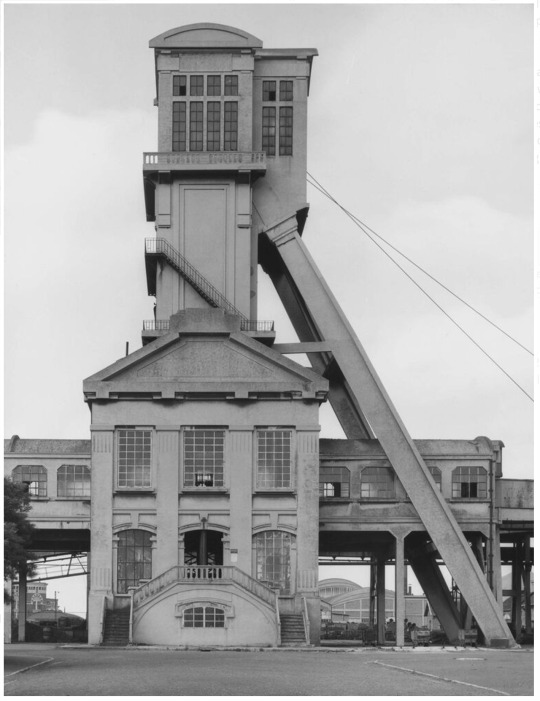
Basic Forms contém um texto instigante do belga Thierry de Duve, professor visitante de Arte Moderna e Teoria da Arte Contemporânea, nas universidades de Lille III e Sorbonne, ambas na França, além de crítico de arte e curador, como do Pavilhão belga Na Bienal de Veneza de 2003, e autor de livros importantes como "Pictorial Nominalism; On Marcel Duchamp's Passage from Painting to the Readymade (University of Minnesota Press, 1991),"Bernd and Hilla Becher" (Schirmer Art Books, 1999), entre dezenas de outros, publicados na Inglaterra, Alemanha e Estados Unidos.

As fotografias são feitas com uma câmera que utiliza negativos no formato grande 20X25cm, no início da manhã, em dias nublados, para eliminar sombras e distribuir a luz de maneira uniforme. O tema é centrado e enquadrado frontalmente, com suas linhas paralelas dispostas em um plano o mais próximo possível de uma elevação arquitetônica. Nenhum ser humano e nenhuma nuvem ou pássaro no céu interferem na rigidez. A imagem não transmite nenhum humor, nem o menor toque de fantasia que perturbe sua neutralidade ascética. Raramente a recusa do Fotografte ( o fotografado) subjetivo é feita e a Sachlichkeit (Objetividade) da lente da câmera foi perseguida de forma tão sistemática, reflete Thierry de Duve.
Considerando a possibilidade de uma fotografia ser totalmente desprovida de estilo, a dos Bechers poderia ser entendida deste modo. Um trabalho que segundo a crítica pertence à tradição arquivística da fotografia na qual o francês Eugène Atget (1857-1927) e o alemão August Sander (1876-1964) – fotógrafos que fizeram questão de não serem artistas e se destacaram, embora hoje sejam considerados como tais. "As fotos de Bernd e Hilla poderiam ser descritas como puros documentos se não houvesse algo que nos impedisse de colocá-las, sem mais delongas, na categoria da foto documental." diz Duve.

O crítico em seu texto explora o ideal da imagem conceitual e recorre a um provérbio chinês apócrifo: “Quando o homem sábio aponta para a lua, o tolo olha para o seu dedo”. No caso dos fotógrafos, o tolo olha para a fotografia e o sábio para o que esta mostra. "O tolo pergunta por que essas imagens são “arte”, enquanto o sábio vê nelas um testemunho indiscutível do mundo real. "No entanto, o mais sábio dos homens sábios é um tolo, porque para saber que o dedo está apontando para a lua, ele deve primeiro olhar para o dedo. É um dos paradoxos da fotografia que um elemento giratório balance incessantemente o espectador de uma representação para um uso estético da imagem e vice-versa.
Mesmo que os Bechers tenham profundo conhecimento da sua profissão é difícil chamá-los de fotógrafos. No mundo da arte onde os seus trabalhos circulam, onde é visto e vendido, as pessoas os descrevem como artistas, acrescentando ocasionalmente “que fazem uso da fotografia”. Para de Duve, "a obra do casal abriga uma emoção contida, melancolia sem nostalgia, dor histórica, guerras de classes travadas ou sustentadas, admiração pela arte multifacetada do engenheiro, lucidez, dignidade, respeito pelas coisas, humildade e auto-anulação que só tenho uma coisa a dizer sobre isso : esta é uma arte genuinamente grande, daquelas que não tem necessidade de ter o seu nome protegido ao ser colocada num museu, porque já pertence à nossa memória coletiva."
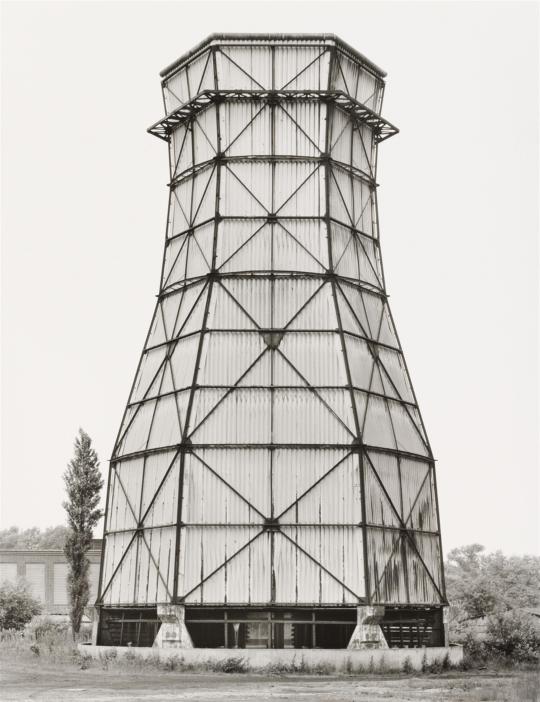
As fotografias, nas paredes de um museu ou galeria são “arte”. Inseridas nas páginas deste livro fazem fronteira com o documento etnográfico, mas em ambos os casos, são fotografias e não pinturas ou gravuras. Mostram aquilo que a luz gravou em sua superfície. O filósofo americano Charles Sanders Peirce (1839-1914) um dos pioneiros da Semiótica - classificou a fotografia como um sinal por conexão física que, como fumaça ou pegadas na neve, é ao mesmo tempo um índice do objeto ao qual se refere e um indicador apontando para ele. É a existência real dos seus referentes, porque como eles estão relacionados por um nexo causal que pode operar em contiguidade espaço-temporal ou em contiguidade quebrada e assemelham-se aos seus referentes. Aqueles que figuram na classificação de Peirce tanto como ícones quanto como índices. Esse é o caso da fotografia. Faça uma fotografia de uma torre de água, no sentido de representá-la e mostre-a, diz o crítico. Ela é a representação de como faria um desenho com uma ligeira diferença que é a causalidade fotoquímica.
O projeto de quase uma vida de Bernd e Hilla Becher ao documentar a paisagem industrial do nosso tempo assegura sua posição no cânone dos fotógrafos do pós-guerra. Ao reunirem ao mesmo tempo arte conceitual, estudo tipológico e documentação topológica, certamente nos aproxima da grande mostra New Topographics Photographs of a Man-Altered Landscape, no museu de fotografia da George Eastman House, em Rochester, Nova York, entre outubro de 1975 e fevereiro de 1976, com curadoria de William Jenkins, na qual os dois tiveram importante papel na ruptura da história da fotografia e as representações não tradicionais da paisagem. A visão romântica e transcendente deu lugar às indústrias austeras, a expansão suburbana e cenas cotidianas, elaboradas por fotógrafos como eles e seus companheiros da mostra original: os americanos Robert Adams, Lewis Baltz (1945-2014), Joe Deal (1947-2010) , Frank Gohlke, Nicholas Nixon, John Schott, Stephen Shore e Henry Wessel (1942-2018).
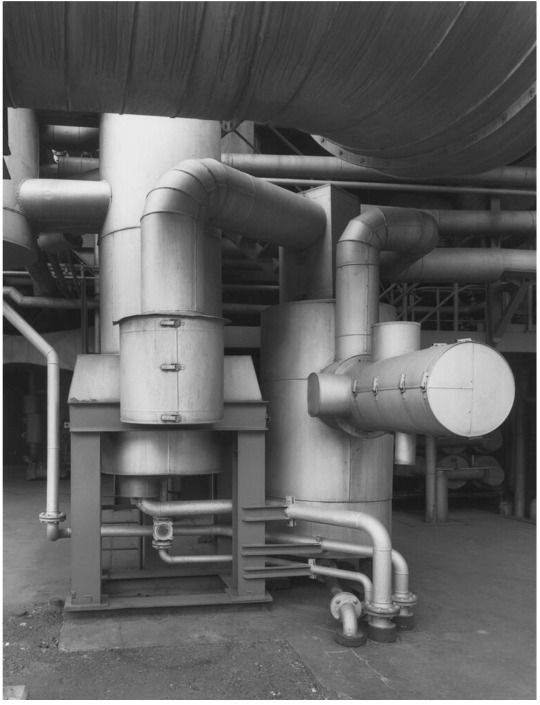
Sintetizadas a um estado essencialmente topográfico e transmitindo quantidades substanciais de informação visual, mas evitando quase inteiramente os aspectos de beleza tradicional, emoção e opinião são características que resumem estes trabalhos. Entretanto, ao olhar as formas capturadas pelos Bechers fica difícil não realizar a beleza (melancólica) e ímpar contida- principalmente pelo seu caráter tipológico nelas representadas- ao incorporaram igualmente uma precisão técnica excepcional, expressa nos negativos de grande formato e filmes lentos.
O livro Bernd & Hilla Becher, Life and Work (MIT Press, 2006) de Susanne Lange, historiadora da fotografia, uma bem documentada biografia, discute as dimensões funcionalistas e estéticas do tema do casal, em especial a tipologização na obra deles, que considera uma reminiscência dos esquemas classificatórios dos naturalistas do século XIX e o estilo de construção industrial anônimo preferido pelos arquitetos alemães. Ela argumenta que os tipos de edifícios industriais impõem-se à nossa consciência como a catedral o fez na Idade Média, e que as fotografias do casal - que à primeira vista parecem registar apenas uma paisagem em extinção - servem para examinar esta configuração das nossas percepções.
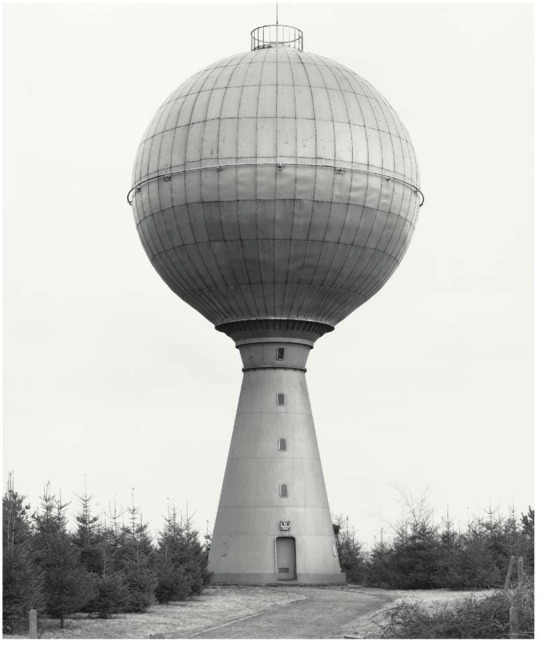
Em 1922, se pergunta Thierry de Duve, quando o arquiteto suíço Le Corbusier (Charles-Edouard Jeanneret-Gris,1887-1965) procurava o caminho para uma nova arquitetura, ou antes, em 1919 quando o arquiteto alemão Walter Gropius (1883-1969) fundou a Bauhaus, quais eram os seus referentes, que modelos citavam para uma arquitetura ainda por nascer? Ele responde: "O mais conhecido foi tirado da América industrial e celebrado tanto pelo primeiro quanto o segundo: o silo de grãos. Se você adicionar armazéns, fábricas, transatlânticos, pontes, torres de água, torres de resfriamento e gasômetros, logo temos uma tipologia de edifícios técnicos inteira, composta de "edifícios industriais", "construções" e “estruturas”. Como devemos chamar toda essa arquitetura anônima sem consciência de si mesmo?"
As imagens de Bernd e Hilla Becher estão entre essas obras, diz Duve. Não desconsidera uma modernidade que, na arquitetura como em outros campos onde a arte e a política se encontram, começou por celebrar um futuro melhor e termina ou esgota-se no desencanto do pós-modernismo, completa o pensador. Mas leva-nos de volta ao lugar onde começou a utopia da arquitetura moderna e onde, apesar de ter falhado em Sarcelles ou Brasília, acrescento, a Cidade do Amanhã ainda guarda a recordação da utopia.
Imagens © Bernd e Hilla Becher. Texto © Juan Esteves
Infos básicas:
Editora Prestel, Londres
Design: Schirmer/Mosel
Impressão EBS, Verona, Itália
Papel Gardamatt
6 notes
·
View notes
Text
Stefan Muthesius-Das englische Vorbild - Eine Studie zu den deutschen...
Stefan Muthesius-Das englische Vorbild - Eine Studie zu den deutschen Reformbewegungen in Architektur, Wohnbau und Kunstgeschichte im späteren 19. Jahrhundert. Erschienen 1974 im Prestel-Verlag München. 258 Seiten mit 133 Abbildungen im Text, Anmerkungen und bibliographischer Übersicht.
0 notes
Text
Of the Beetle in Nature and Culture.
Finding creative inspiration in connections between the Arts and Science through the concept of symmetry Pt2.
The BEETLE (or COLEOPTERA) is an order of holometabola (or endopterygota), which means they undergo a complete metamorphosis between larval, pupal and adult stages. The beetle ia a bilateral animals are more or less symmetric with respect to the sagittal plane, while plants and sessile animals have radial or rotational symmetry (e.g. echinoderms have five fold rotational symmetry). Its order is a fascinating one, sporting somber and flamboyant pigmentation, and seemingly infinite aesthetic variations.
"Pigmentation in beetles comes either from pigmentation or optical interference or both factors in combination. […] Optical interference colours result when light reflecting and refracting through the micro-thin transparent outer layer of the cuticle interacts visually with the pigmented layer beneath." (Living Jewels, Poul Beckmann, Prestel-Verlag, 2004).
Some are aposematic (or at least batesian mimics): advertising by an animal through bright colours and patterns of its toxicity to predators, signalling it is not worth attacking or eating (e.g. hycleus lugens, coccinellidae, etc.). Others have effective camouflage.
Some beetles’ bright colours are ordinarily hidden by somber elytra, in order to stun the predators with their sudden appearance at take off.
Some are bioluminescent in order to attract attention and signal a potential mate, such as the lampyridae (commonly, fireflies), phengodidae and elateridae. These are delicately built and soft bodied, and their light varies in pattern and in colour (from light green to orange).
Historically, beetles have been mystified creatures, often associated with the creation of the universe (e.g. in ancient Egypt) or with sin (e.g. in christianity).
The scarabeus sacer (sacred scarab, dung beetle or kheper in ancient Egyptian) was linked with Khepri, god of creation and the rising sun, via imagery (the rolling of dung into a ball by the beetle resembled the rolling of the sun by the god) and etymology (kheper and Khepri both derive from the same root meaning ‘coming into being’ or ‘to transform’). The kheper also held funerary significance, as in the case of heart scarabs and of similitude between the pupa and the mummy.
Ritual objects and jewellery are often crafted from the elytra (the hard forewings, not actually usable for flying), or shapes of beetles made out of bone, ivory, stone, and tjehenet (a kind of faience, self-glazing clay).

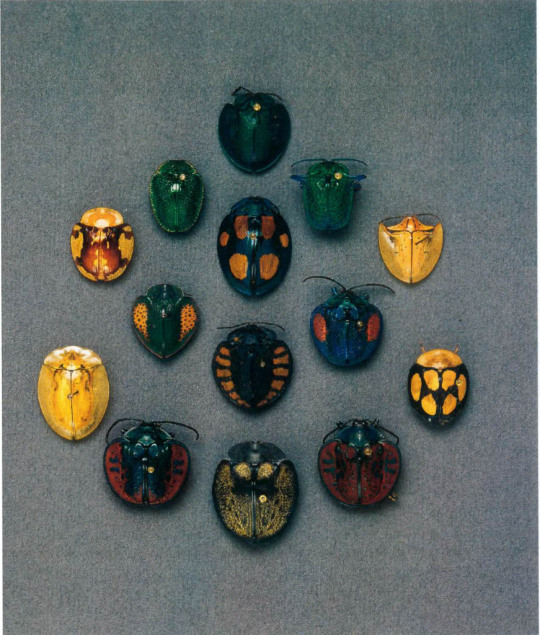
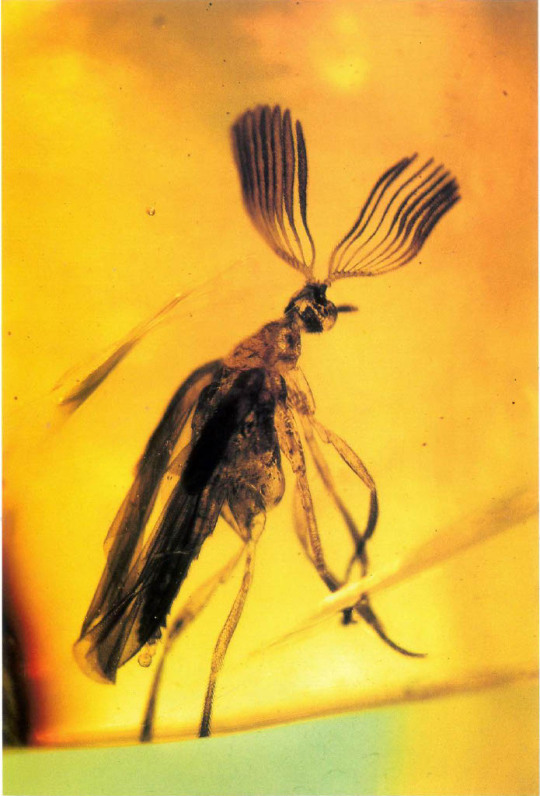
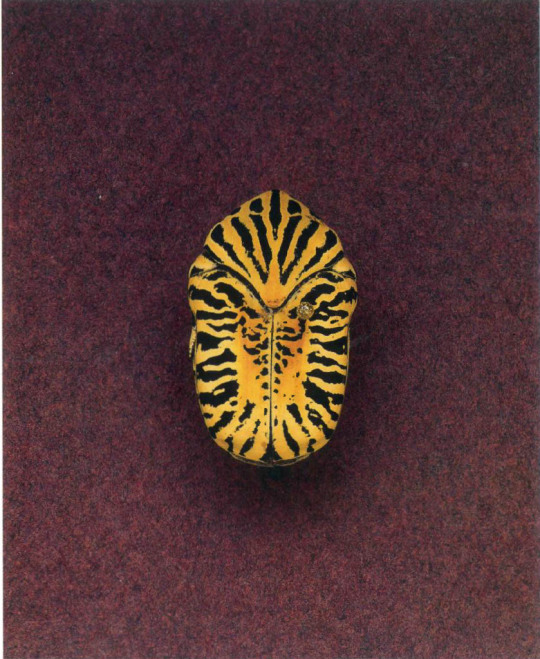
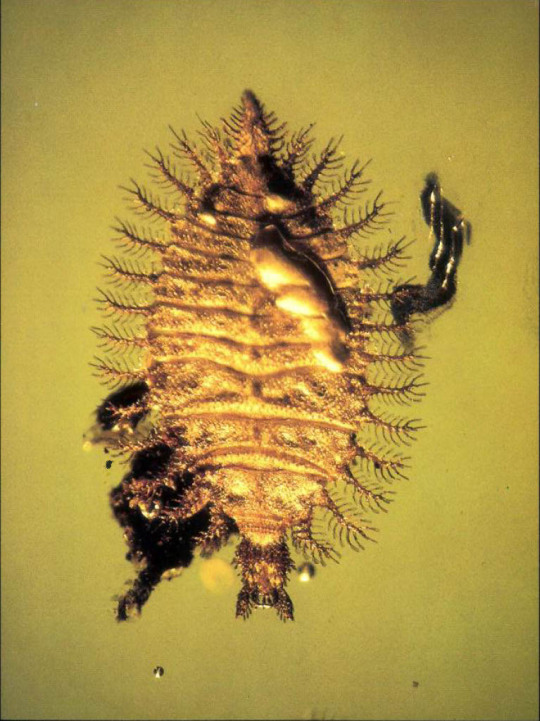

(Images from An Inordinate Fondness for Beetles, A.V. Evans, C.L. Bellamy, photography by L.C. Watson and G. Poinar, University of California Press, 1996.)
1 note
·
View note
Text










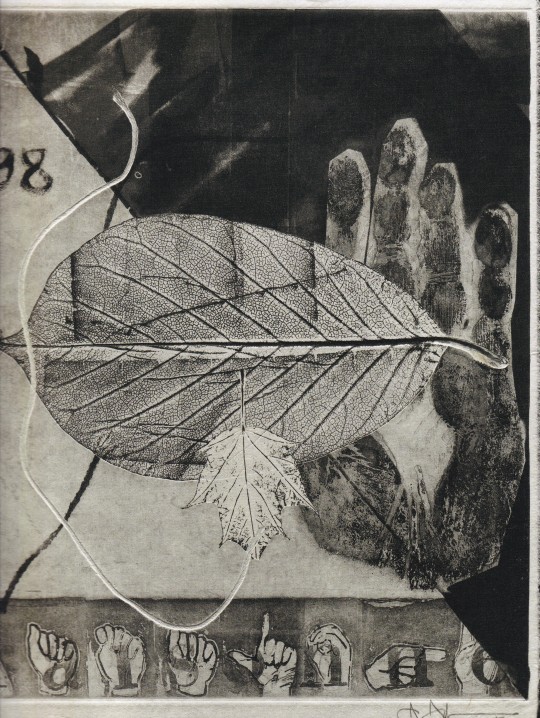

Jasper Johns The 100 Monotypes
edited by Ortrud Westheider, Michael Philipp
Prestel Verlag, München 2018, 128 pages, 24x30cm, ISBN 978-3-7913-596-2
euro 30,00
email if you want to buy [email protected]
exh.Museum Barberini, Postdam
Jasper Johns (b. 1930) is one of the leading artists of American Pop art. Well-known for his large-format paintings in bright, vibrant colors, he was also a prolific printmaker, and his graphic work puts the peintre-graveur on a par with Goya and Picasso. On the occasion of his 90th birthday on May 15, 2020, the Museum Barberini presented his most recent series, The 100 Monotypes
“Is it a flag, or is it a painting?” This was the question asked by the musician John Cage when Jasper Johns began to move abstract expressionism back to figuration in the 1950s by painting flags, numbers, targets, maps, and letters. Cage alluded to Johns’s blurring of the boundaries between reality and representation. Johns has also repeatedly addressed the dynamics of reproduction by experimenting with collage and repetition.
Since each print is unique, monotypes are more akin to painting than to printmaking. Reworking the same plates many times for The 100 Monotypes, Johns added an etched imprint of his hand and symbols of American Sign Language (ASL), as well as motifs that were important to him, such as string, stencils, and allusions to his own paintings and sculptures. The artist commented about this interaction in an interview: “I like to repeat an image in another medium to observe the play between the two: the image and the medium. In a sense, one does the same thing two ways and observes differences and sameness—the stress the image takes in different media. I can understand that someone else might find that boring and repetitious, but that’s not the way I see it. I enjoy working with such an idea.” Each monotype informs the next, thus forming part of a narrative chain that reflects Johns’s artistic practice as well as his oeuvre.
26/06/26
#Jasper Johns#100 monotypes#art exhibition catalogue#Museum Barberini Postdam 2018#fashionbooksmilano
0 notes
Text
Notas biográficas
Ugo Zovetti (Curzola, 1916-Milão, 2010), filho da arte – o pai de Zovetti foi um dos maiores expoentes da Secessão Vienense – começou a fotografar na década de 1940, documentando a cidade de Milão, da destruição à reconstrução pós-guerra. Suas fotografias são rigorosas e, ao mesmo tempo, transcendem imediatamente o lugar para se tornarem ícones que simbolizam a contemporaneidade. Zovetti se interessava por questões relacionadas aos assuntos humanos, todas aprofundadas e participadas com emoção. Participou do Gruppo fotografico del Naviglio e trabalhou muito para difundir a fotografia italiana na Europa. Ao longo dos anos, também colaborou com a revista Magnum (Colônia, Alemanha). Foi homenageado com vários prêmios e apreciado no exterior desde a década de 1960 – Ugo Zovetti é Excelência FIAP desde 1958 – e passou uma temporada de trabalho em Londres. Zovetti participou de vários concursos e exposições; entre 1960 e 1965, ele foi juramentado pela Federazione Italiana Associazioni Fotografiche (FIAF) italiana, intervindo ativa e criticamente no debate da época. Os anos setenta o viram se dedicar especialmente à pintura, mas depois retornou à sua Milão com a Rolleiflex 6x6 pendurada no pescoço: "As imagens saltam sobre mim", ele disse. Em 1997, ele publicou o volume Monte Stella , edições Fumagalli, dedicado à Milão da reconstrução, com um texto de Marco Meneguzzo. Fotografias de Zovetti foram exibidas em 2004 na exposição Gli anni della Dolce vita em Turim e em 2005 em Anni Cinquanta no Palazzo Reale em Milão. Duas exposições antológicas foram realizadas na Itália em 2006 e 2007: a primeira foi no Centro Urbano de Monza, enquanto a outra foi na Rocca Sforzesca em Soncino (Cremona). Em 2008 ADMIRA apresentou a exposição Metamofosi di una città. Milão 1958 – 2008 no CMC, Centro Cultural de Milão, acompanhado do livro com curadoria de Enrica Viganò e publicado pela ADMIRA Edizioni para a série I Quaderni Del CMC.
Ugo Zovetti sempre imprimiu pessoalmente suas impressões em preto e branco, mesmo em grande formato.
Uma seleção de suas fotografias está incluída na exposição itinerante internacional e no livro NeoRealismo. La nuova immagine in Italia 1932-1960 , publicado em edições italianas (Admira Edizioni, 2006), espanholas (La Fábrica Editorial, 2007), alemãs (Christoph Merian Verlag / Fotomuseum Winterthur, 2007) e inglesas (DelMonico Books•Prestel / Admira Edizioni, 2018).
Entre 2002 e 2004, um núcleo notável de suas obras antigas foi adquirido de coleções de museus dos EUA e algumas de suas gravuras foram incluídas na recente aquisição do Metropolitan Museum of Art, em Nova York.
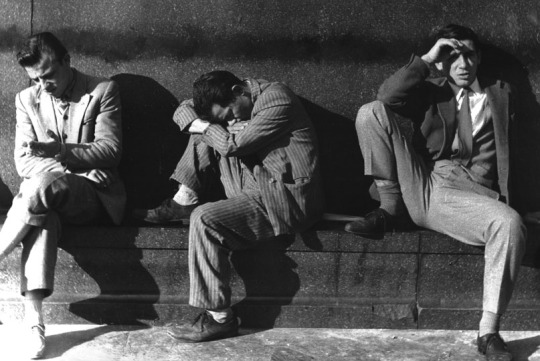
Ugo Zovetti - Gli sfaccendati Tre uomini seduti su un muretto
322 notes
·
View notes
Text
Readings
i liked the surrealist article as the artists works speaks to dislocation, particularly the feeling of being neither a local nor a stranger.
i like that the artists draws from her memory , extracts her dreams, fantasies and fears, and confronts them with the materiality of the world
the second articles was a particular interest to me because the artist utilises their subconscious as a means to communicate with the audience. which in turn causes the audience to self relfect and question themselves
INSPO:







Blanché), U. B. (2016). Banksy Urban Art in a Material World. Marburg: Tectum Verlag Marburg.
i don't know why i read this but i just found it interesting if im being honest
i found the part where he says that the journalists say that his art is like a rip off well not just his but street art in general and also that he described like if its with the time then its currency if that makes sense (like if its in the now or with the trend? or worldly events social issues maybe?)
maybe i should start focusing on the aethics and presentation more ?? but then does that take away the raw form of my art ? if im not creating for me does that then mean its become commercialised?? i don't know - i think i might want to find out though
0 notes
Text

Poster for Rauschenberg Retrospective, (offset lithograph), National Collection of Fine Arts, Washington, D.C., 1976 [© Robert Rauschenberg Foundation, New York, NY]
Bibl.: Marc Gundel, Rauschenberg. Posters, With a contribution by Jürgen Döring, Prestel Verlag, München, London, New York, NY, 2001
#graphic design#art#exhibition#poster#robert rauschenberg#national collection of fine arts#marc gundel#jürgen döring#prestel verlag#robert rauschenberg foundation#1970s
48 notes
·
View notes
Text





Book 379
Hokusai: Prints and Drawings
Matthi Forrer
Prestel-Verlag 1991
Published on the occasion of an exhibition at the Royal Academy of Arts, London, this book of prints and drawings by Katsushika Hokusai (1760-1849) is a solid overview of the work of the great master. Although, considering that Hokusai produced some 30,000 pieces of art during his extraordinarily long career, it seems clear to me that one book won’t really do. At least, not for me. But if you can only have one book about Hokusai, you could do a lot worse than this one. With 154 lovingly reproduced illustrations sourced from collections around the world, 126 of which are in color, this is a wonderful introduction to the variety, innovation, and sheer beauty of Hokusai’s work.
#bookshelf#illustrated book#library#personal library#personal collection#books#book lover#bibliophile#booklr#graphic design#hokusai#matthi forrer#prestel#Art#asian art#japanese art
14 notes
·
View notes
Text
Reference List
Adkinson, R. (1995). Ancient Egypt (Sacred Symbols). London: Thames & Hudson Ltd.
Dunand, F. and Lichtenberg, R. (1994) Mummies : a journey through eternity. London: Thames & Hudson Ltd.
Fictitio, A. (2011) The Life of Christ in Cats [Urinal Procelain].
Higgie, J. (2007) The Artist’s Joke. London: Whitechapel.
Hornung, E., Bryan, B.M. and United Exhibits Group, C. (2002) The quest for immortality : treasures of ancient Egypt. Munich; London: Prestel-Verlag.
Horrible Histories (2009) BBC. Available at: BBC Player (Accessed; 2 October 2022)
Málek, J. (1999) Egyptian Art. London: Phaidon Press.
Riggs, C. (2020) Ancient Egyptian Magic: A Hands-on Guide. London: Thames & Hudson Ltd.
Saleh, M. and Sourouzian, H. (1987) The Egyptian Museum, Cairo : official catalogue. Munich: Prestel.
Vassilika, E. (1995) Egyptian art. London: Cambridge University Press.
Wallenfeldt, J. (2019) What Did Cleopatra Look Like? Available at: www.britannica.com/story/what-did-cleopatra-look-like (Accessed: 2/11/22)
Bibliography
Animal Crossing New Horizons (2020) Nintendo Switch [Game]. Nintendo: Japan.
Assassins Creed Origins. (2017) PlayStation [Game]. Ubisoft: Montreal.
Burnham. B. (2013) EGGHEAD or, You Can’t Survive on Ideas Alone. London: Orion Ltd.
Moon Knight (2022) Marvel. Available at: Disney Plus (Accessed: 20 October 2022).
3 notes
·
View notes
Text
Olaf Heine - Human conditions
Olaf Heine announces new photobook ❤️
"This gorgeous collection of meticulously composed duotone images of actors, musicians, and artists spans the German photographer’s entire 30-year career, and offers a rich sampling of his genius for staging, composition, and portraiture."
(secretly hoping there'll be a bit of Rammstein in it 🍀)
2 notes
·
View notes
Text
IL NEIGERA...
Je ne supporterais même pas un hiver sans neige. Un jour que la neige s'était arrêtée de tomber, j'ai pleuré. Mon pauvre père m'a regardé si étrangement. Il devait trouver la chose inhabituelle. (...) Il faut que je dise que pendant les journées que j'ai passées avec mon père, qui était très occupé, sauf le dimanche et les jours de fête, il n'arrivait pas grand-chose, (...) ; pendant l'hiver (froid), je pouvais (et je ne m'en privais pas) rester à la fenêtre tous les jours, à regarder la neige qui tombait, surtout si la tempête faisait rage.
— Henry DARGER, (1892–1973) Artiste américain. In «L'Histoire de ma vie», éditions Aux forges de Vulcain, 2014. (réédition aux Éditions Points, Paris, 2020, pp. 14 et 94) (traduction de Anne-Sylvie Homassel)
I would not even stand for a snowless winter. I cried once, when snow stopped falling. And my poor father looked at me so queer. It must have been unusual for him. (...) I will have to say, all my chilhood days with my father, who was very busy every day, except sundays and holidays, were sort of uneventful, (...) and during winter (cold) I could and would stand by the window all day, watching it snow, especially if there was a great big blizzard raging.
extrait du tapuscrit original in «Henry Darger» by Klaus Biesenbach, Prestel verlag, 3rd edition, 2019, pp. 282 and 307.
5 notes
·
View notes
Photo
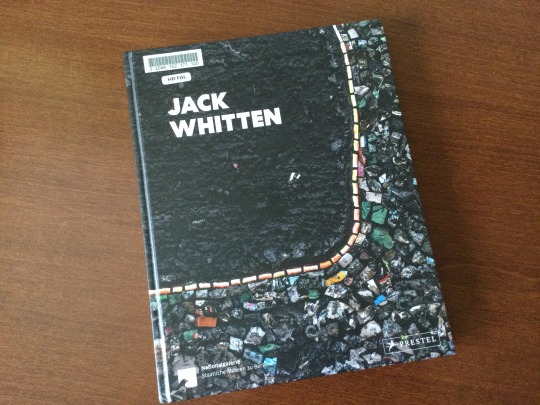
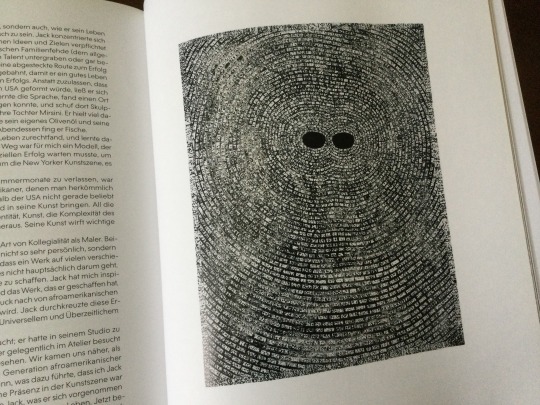

Jack Whitten (1939 – 2018) was born in Bessemer, Alabama. Growing up in the segregated South, he was often angered by the racism he experienced and got involved in the civil rights movement in his youth. His experiences with anti-black racism shaped his worldview, which he embodied in his art by extending the meaning of abstraction in his chosen medium of paint in a way that was truly unique.
“My African American identity shaped by the politics of racism in America makes it extremely difficult for me to experience the leisure of being apolitical. Every artist recognizes the “immediateness” of being apolitical as a selfish narcissistic defense mechanism. It is an existentialist right to reject the world in order to commune with the self. History has proven that the apolitical is a dangerous political choice and that there is a price to pay under certain circumstances” – J.W. (Jack Whitten: Jack's Jacks, page 198)
“… I trust red, yellow … all pigments embody truth. We must be careful and allow them to speak for themselves. Stop imposing meaning to colors. They don’t need your help. You set up the support, i.e., the scaffolding, and they will take care of the rest.” – J.W. (page 42)
Check out our previous post on Jack Whitten’s work.
Image 1: Front cover Image 2: “Self-portrait: Entrainment” 2008 Image 3: “Self-portrait: Entrainment” detail
Jack Whitten: Jack's Jacks For the Nationalgalerie - Staatliche Museen zu Berlin edited by Udo Kittelmann, Sven Beckstette; authors: Sven Beckstette [and 7 others]. Published: Berlin, Germany : Nationalgalerie, Staatliche Museen zu Berlin ; Munich, Germany: Prestel, [2019] Manufactured: Passau, Germany : Passavia. 237 pages: illustrations, portraits (chiefly color); 30 cm Parallel texts in English and German. "Jack Whitten: Jack's Jacks":, March 29-September 1, 2019, Hamburger Bahnhof, Museum für Gegenwart, Berlin, Germany. Author / Creator Whitten, Jack, 1939-2018 [artist] Staatliche Museen Preussischer Kulturbesitz [issuing body, organizer, host institution] Prestel Verlag [issuing body] ISBN : 9783791358628 ISBN : 3791358626 2019 HOLLIS number: 99153820122703941
#jackwhitten#blackartist#blackhistorymonth#blackpeoplematter#blackimagesmatter#painting#harvardfineartslibrary#harvardfineartslib#fineartslibrary#Harvard#harvard library#HarvardLibrary
13 notes
·
View notes